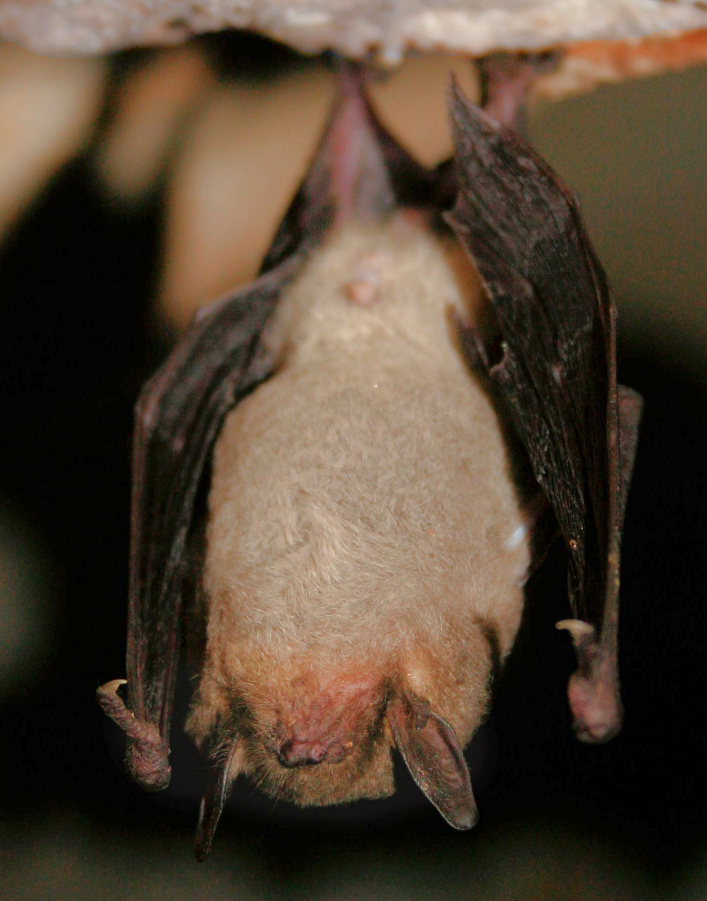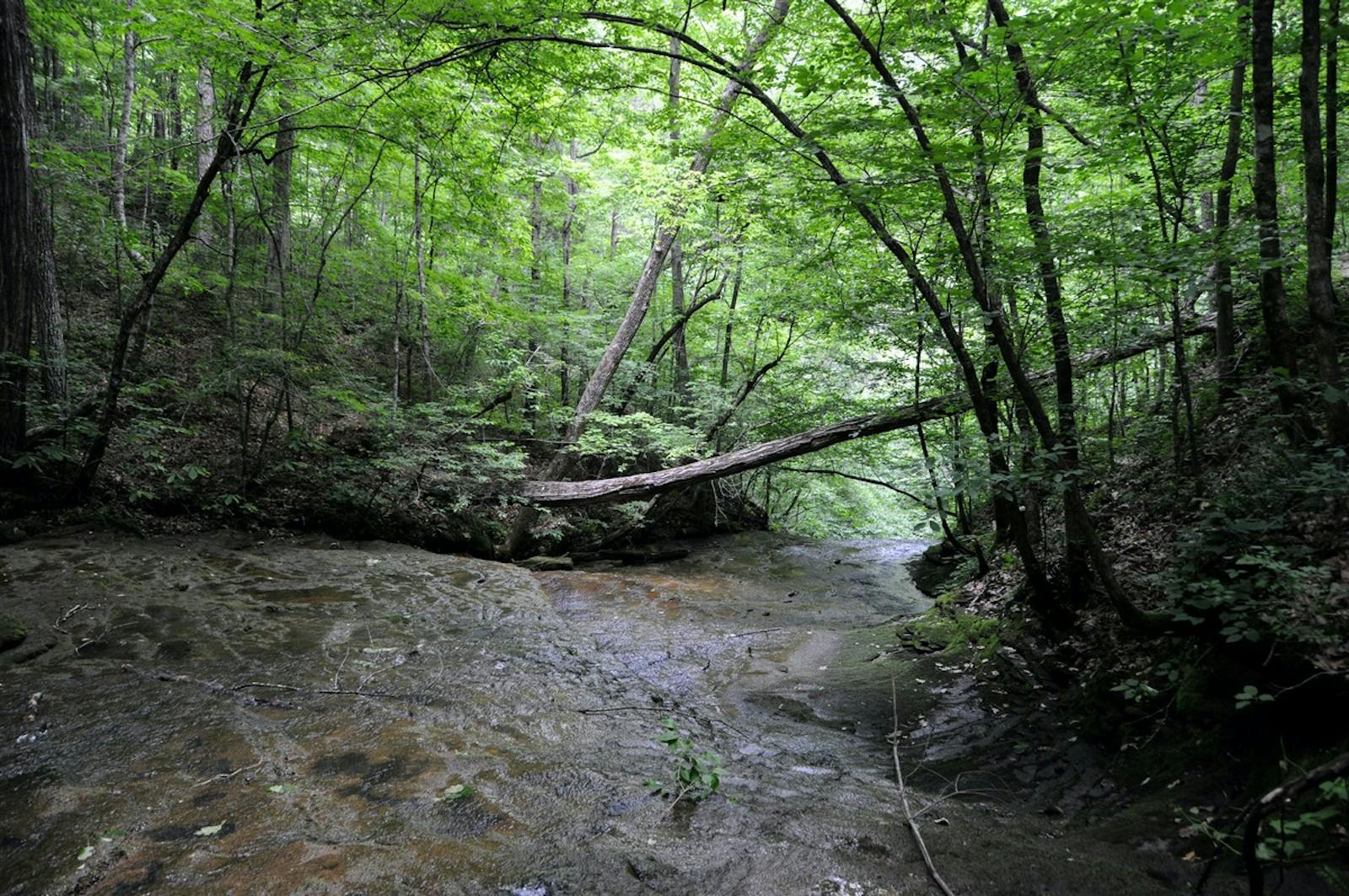Interior Plateau US Hardwood Forests
The ecoregion’s land area is provided in units of 1,000 hectares. The conservation target is the Global Safety Net (GSN1) area for the given ecoregion. The protection level indicates the percentage of the GSN goal that is currently protected on a scale of 0-10. N/A means data is not available at this time.
Bioregion: Interior Plateau & Southern Great Lakes Forests (NA23)
Realm: Northern America
Ecoregion Size (1000 ha):
12,376
Ecoregion ID:
336
Conservation Target:
39%
Protection Level:
1
States: United States: AL, TN, KY, IL, IN, OH
This ecoregion lies to the west of the Cumberland Plateau (Appalachian Mixed Mesophytic Forests ecoregion) and includes a small part of northern Alabama, most of central Tennessee, central and western Kentucky, and the southernmost portions of Illinois, Indiana, and southwestern Ohio. Although not as biologically diverse as the Appalachian ecoregions, especially in tree species and vertebrates, it has a high diversity of non-woody species, including herbaceous plants and shrubs. Prior to European settlement this ecoregion had extensive grasslands, limestone cedar glades, and other non-forest communities. These non-forest communities are distinguished by a number of endemic species.
The climate of the Interior Plateau US Hardwood Forests ecoregion is mostly warm temperate, with cold temperate at its northern edge. The topography is generally flat to rolling, but with some dissected terrain, especially along the edge of the Cumberland and Allegheny plateaus. Limestones dominate the geology. The dominant forest type is oak-hickory, which especially in the northern portion of the ecoregion forms a mosaic with prairie.
Common trees include white oak, red oak, black oak, bitternut hickory, shagbark hickory, and dogwood. The richest biodiversity in the region is mostly associated with grasslands and related communities. The Central Basin of Tennessee is properly renowned for its limestone cedar glades, which have extensive areas of bare limestone or very shallow soils and at least 29 endemic or near-endemic plants, including seven that are disjunct (separated) from their main distributions. Some of these endemic plants have their closest relatives in the western United States.
Less endemic-rich, but still fascinating, limestone glades and prairies occur in Kentucky, Alabama, and other portions of this ecoregion. An extensive grassland known as the Big Barrens occurred on the Pennyroyal Plain of Kentucky and adjacent Tennessee. This grassland probably had a climatic origin, but it was maintained and likely expanded through burning by Native Americans. A significant extent of this grassland remains and is actively managed on the Fort Campbell Army installation.
In Ohio, on the northwestern edge of this ecoregion adjacent to the Southern Great Lakes Forests and Appalachian Mixed Mesophytic Forests ecoregions, is the Edge of Appalachia Preserve network. This system of several connected preserves is owned and managed by The Nature Conservancy and the Cincinnati Museum of Natural History. This is one of the most significant natural areas in the region, with a mix of hillside prairies, forests, and ravines, and was studied extensively by the eminent ecologist E. Lucy Braun.

The flagship species of the Interior Plateau US Hardwood Forests ecoregion is the gray bat. Image credit: Creative Commons
One of the most remarkable features of this ecoregion is the Mammoth-Flint Ridge Cave System in Kentucky, near the boundary of this ecoregion and the Central US Forest-Grasslands Transition ecoregion. With 663 km of passageways surveyed, this is by far the world's longest known cave system. It is home to several species of bats, including the endangered gray bat and Indiana bat, as well as blind cavefish and several cave invertebrates. This region shares watersheds with the adjacent Appalachian ecoregions, including the Tennessee-Cumberland and Ohio river basins, which are among the primary freshwater biodiversity hotspots in the temperate world.
The Interior Plateau US Hardwood Forests ecoregion has been degraded by agriculture and logging, among other threats. Very little old-growth forest remains, and most grasslands and aquatic habitats are degraded. Urban sprawl, especially outward from Nashville, TN, is extreme. Priority conservation actions for the next decade are to: 1) greatly increase federal, state, and local acquisition of conservation lands, and improve management of existing conservation lands; 2) reduce or eradicate populations of problematic exotic species; and 3) reintroduce populations of extirpated species such as eastern cougar.
Citations
1. Braun, E.L. 1950. Deciduous Forests of Eastern North America. Blackburn Press, Caldwell, NJ.
2. Ricketts, T.H. et al. 1999. Terrestrial Ecoregions of North America: A Conservation Assessment. Island Press, Washington, D.C.
3. Tennessee Flora Committee. 2015. Guide to the Vascular Plants of Tennessee. University of Tennessee Press, Knoxville.



